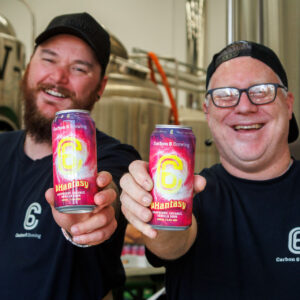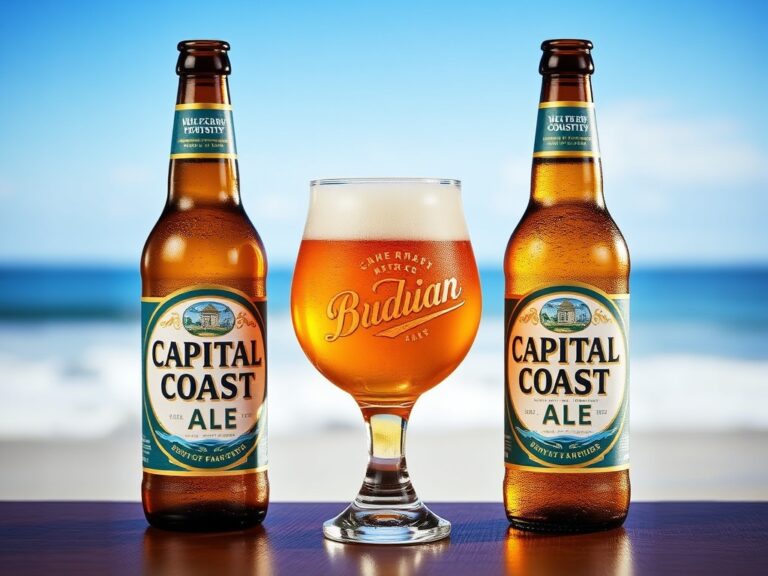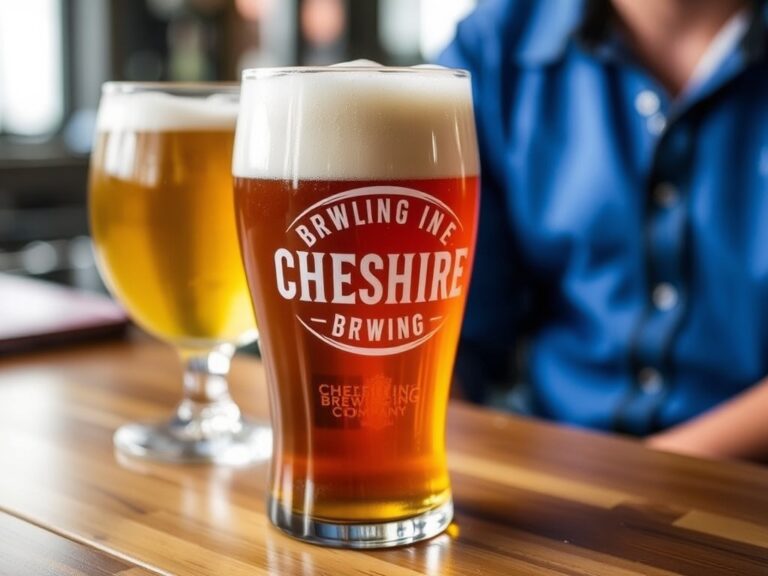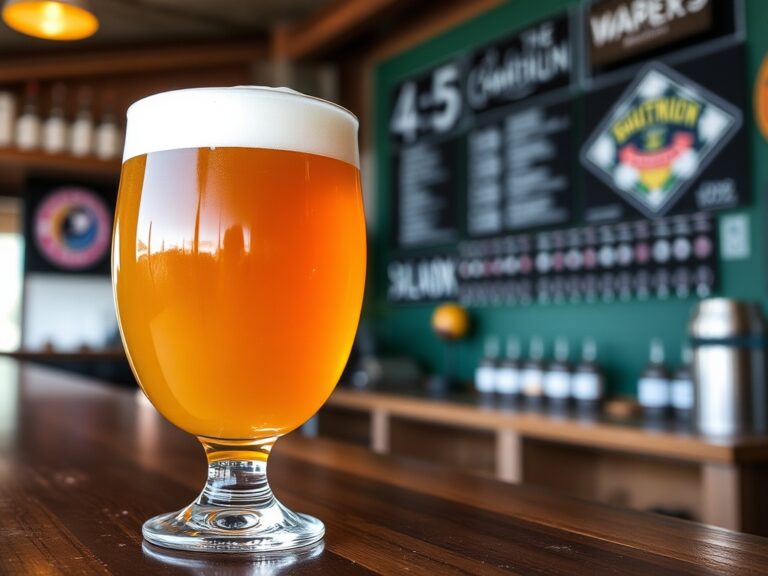Craft Beer Revolution: How Innovative Brews Are Transforming Your Tasting Experience and Boosting Small Breweries

The Rise of the Craft Beer Movement
In my experience with craft beer, I’ve watched an incredible transformation over the past decade. What started as a niche hobby has exploded into a global movement, redefining what it means to enjoy a good brew. I’ve personally found that the craft beer scene is more vibrant and diverse than ever before, thanks to passionate brewers pushing boundaries and experimenting with flavors.
From what I’ve learned, the craft beer revolution is driven by a desire for authenticity, quality, and innovation. Small breweries are no longer just local favorites; they’re becoming influential players in the industry. I want to share what I’ve discovered about how this movement is not only elevating your tasting experience but also helping small breweries thrive amidst big-brand competition.
Innovative Techniques Shaping Modern craft beer
Embracing New Flavors and Ingredients
In my journey exploring craft beer, I’ve discovered that innovation often starts with ingredients. Breweries are now incorporating everything from exotic fruits to locally sourced herbs, creating unique flavor profiles. I’ve found that these creative combinations make each sip an adventure. For instance, I recently tried a blueberry basil saison that completely redefined my expectations of traditional beer.
From my research, I see that small breweries are experimenting more boldly than ever. They’re blending ingredients that were once considered unconventional, resulting in a more diverse and exciting craft beer landscape. I recommend seeking out these innovative brews to truly experience how flavor profiles are expanding.
Tech-Driven Brewing Processes
I’ve also found that technology is playing a huge role in transforming how craft beer is brewed. From advanced fermentation control systems to 3D-printed hop inserts, breweries are leveraging tech to fine-tune their creations. In my experience, this leads to more consistent quality and allows small brewers to push creative boundaries without sacrificing precision.
From what I’ve learned, these innovations help small breweries optimize their resources and produce high-quality beer at scale. It’s amazing to see how digital tools are democratizing brewing, giving small players a competitive edge. I recommend that aspiring brewers and enthusiasts stay updated on the latest brewing tech to appreciate the craftsmanship behind each craft beer.
How Small Breweries Are Thriving with Innovation
The Power of Community and Collaboration
In my experience, one of the most inspiring aspects of the craft beer scene is how small breweries are building communities. I’ve discovered that collaborations between local breweries and even with chefs or artists create a vibrant ecosystem. These partnerships often lead to innovative brews that attract new audiences and boost sales.
From my research, I see that collaboration is a key driver for small breweries to survive and thrive. It not only expands their reach but also fosters creativity. I recommend supporting local craft beer projects because they embody the spirit of innovation and community that fuels this revolution.
Marketing and Branding Innovation
I’ve found that small breweries are also excelling in branding and storytelling. They tell authentic stories about their ingredients, brewing process, or local roots, which resonates with consumers seeking genuine experiences. I believe this personal touch helps them stand out in a crowded market.
From what I’ve learned, clever marketing strategies—like limited editions or brewery tours—create buzz and deepen customer loyalty. I recommend exploring these innovative marketing approaches, as they significantly contribute to the success of small craft beer brands.
My Personal Journey with Craft Beer
Discovering My Favorite Brews
In my personal experience, discovering craft beer has been an exciting journey. I vividly remember my first encounter with a hazy IPA that changed my perception of beer entirely. Since then, I’ve made it a point to try new styles and support small breweries whenever I can.
I’ve found that the more I explore, the more I appreciate the craftsmanship and innovation behind each brew. I recommend everyone to approach craft beer with curiosity and an open mind—there’s a whole world of flavors waiting to be discovered.
Attending Brew Festivals and Tasting Events
From my experience, attending local brew festivals has been a fantastic way to taste innovative craft beer and meet passionate brewers. These events often showcase experimental brews that you won’t find in stores, offering a firsthand look at the creative process.
I believe that supporting these events helps small breweries gain visibility and encourages continued innovation. I recommend making it a habit to attend local tasting events—you’ll be surprised how much your palate can expand and how much you can learn about the craft beer industry.
Future Trends in the Craft Beer Scene
Sustainability and Eco-Friendly Practices
In my research, I see a clear trend towards sustainability within the craft beer industry. Small breweries are adopting eco-friendly practices like using renewable energy, recycling waste, and sourcing local ingredients. I’ve found that these efforts not only help the environment but also appeal to conscientious consumers.
From what I’ve learned, sustainability is becoming a key component of the craft beer identity. I recommend supporting breweries that prioritize eco-friendly practices—they’re leading the way to a more sustainable future for craft brewing.
Hybrid and Experimental Styles
I’ve noticed that the future of craft beer includes a lot of hybrid styles, blending different traditions and ingredients. For example, sour ales mixed with barrel-aging techniques or infusions of botanicals. I’ve tried some of these experimental brews, and they often challenge my palate in delightful ways.
From my perspective, these innovations keep the scene fresh and exciting. I believe that as more breweries embrace experimentation, we’ll see even more creative and boundary-pushing craft beer offerings in years to come.
References and Resources
Throughout my research on craft beer, I’ve found these resources incredibly valuable. I recommend checking them out for additional insights:
Authoritative Sources on craft beer
-
Brewers Association
brewersassociation.orgThis organization provides comprehensive resources on craft beer trends, brewing techniques, and industry statistics, perfect for both enthusiasts and brewers.
-
BeerAdvocate
beeradvocate.comA community-driven site with reviews, ratings, and forums that help me discover new craft beers and learn from fellow enthusiasts.
-
Research on Brewing Innovations
ncbi.nlm.nih.govAn academic article discussing technological advancements in brewing that are shaping the future of craft beer.
-
Good Beer Hunting
goodbeerhunting.comA leading publication exploring innovation, culture, and sustainability within the craft beer industry.
-
CraftBeer.com
craftbeer.comOfficial website of the Brewers Association, providing news, recipes, and insights into the craft beer community.
-
BBC Culture: The Craft Beer Rise
bbc.comAn insightful article on how craft beer is shaping modern culture and consumer habits.
-
Heritage Foundation – Beer and Culture
heritage.orgProvides historical context and the cultural significance of craft beer as part of national heritage and tradition.
Frequently Asked Questions
What makes craft beer different from mass-produced beers?
In my experience, craft beer is distinguished by its emphasis on quality, flavor, and innovation. Unlike mass-produced beers, which often prioritize consistency and shelf stability, craft beers are typically brewed in smaller batches with unique ingredients and brewing techniques. This results in a more diverse and flavorful profile that offers a richer tasting experience.
How can I support small breweries and the craft beer revolution?
From my perspective, supporting small breweries involves buying directly from local taprooms, attending brew festivals, and sharing your enthusiasm on social media. I believe that your patronage helps these breweries innovate and grow, ensuring that the craft beer scene remains vibrant and diverse. Remember, every pint you purchase contributes to the sustainability of this exciting movement.
What are some emerging trends in craft beer?
Based on my observations, trends like sustainability, hybrid styles, and innovative flavor combinations are shaping the future of craft beer. Breweries are increasingly focusing on eco-friendly practices and experimenting with ingredients, which keeps the scene fresh and exciting. I recommend staying updated with industry news to discover the latest trends and innovations.
Can craft beer be healthful?
In my experience, moderate consumption of craft beer can have certain health benefits, such as antioxidants from hops and other ingredients. However, I always recommend enjoying it responsibly. The key is moderation and appreciating the craftsmanship behind each brew rather than drinking excessively.
Conclusion
In conclusion, my research on craft beer has shown that this movement is more than just about brewing; it’s about innovation, community, and redefining taste. I believe that the future of craft beer is incredibly bright, driven by passionate brewers pushing creative boundaries. I hope this guide helps you appreciate the depth and diversity of the craft beer scene and encourages you to explore more of these innovative brews. Whether you’re a seasoned enthusiast or just starting, there’s always something new to discover in the world of craft beer.
Find out more information about “craft beer”
Search for more resources and information:






